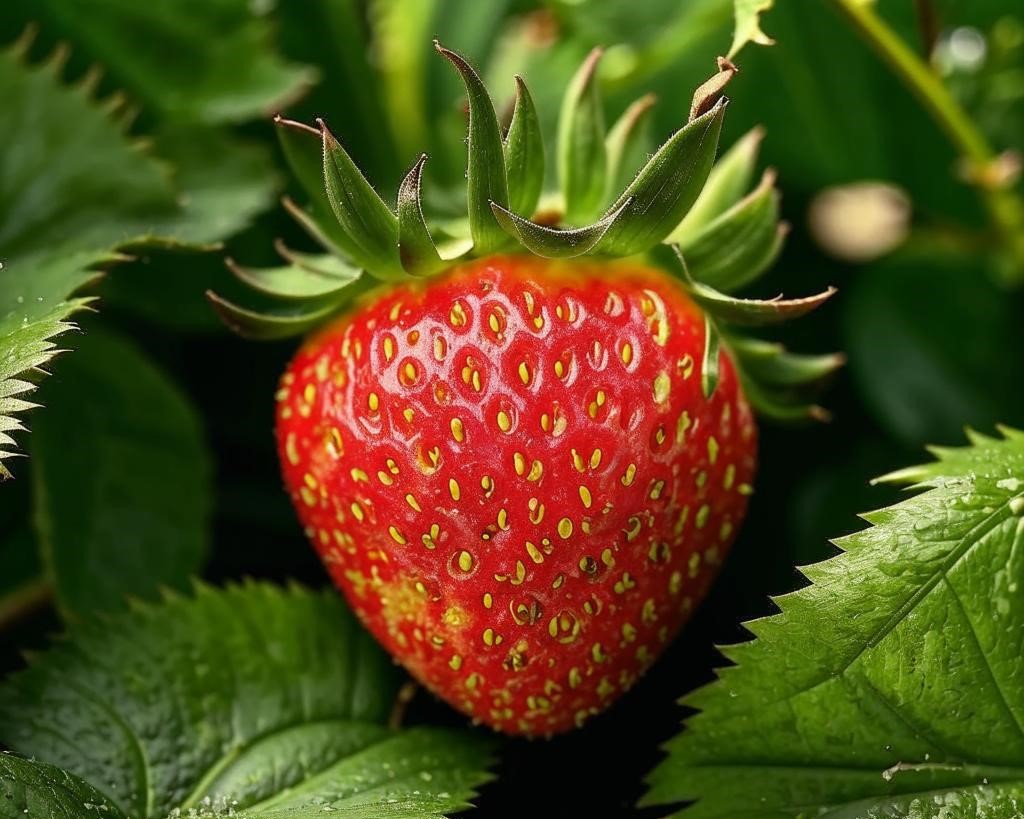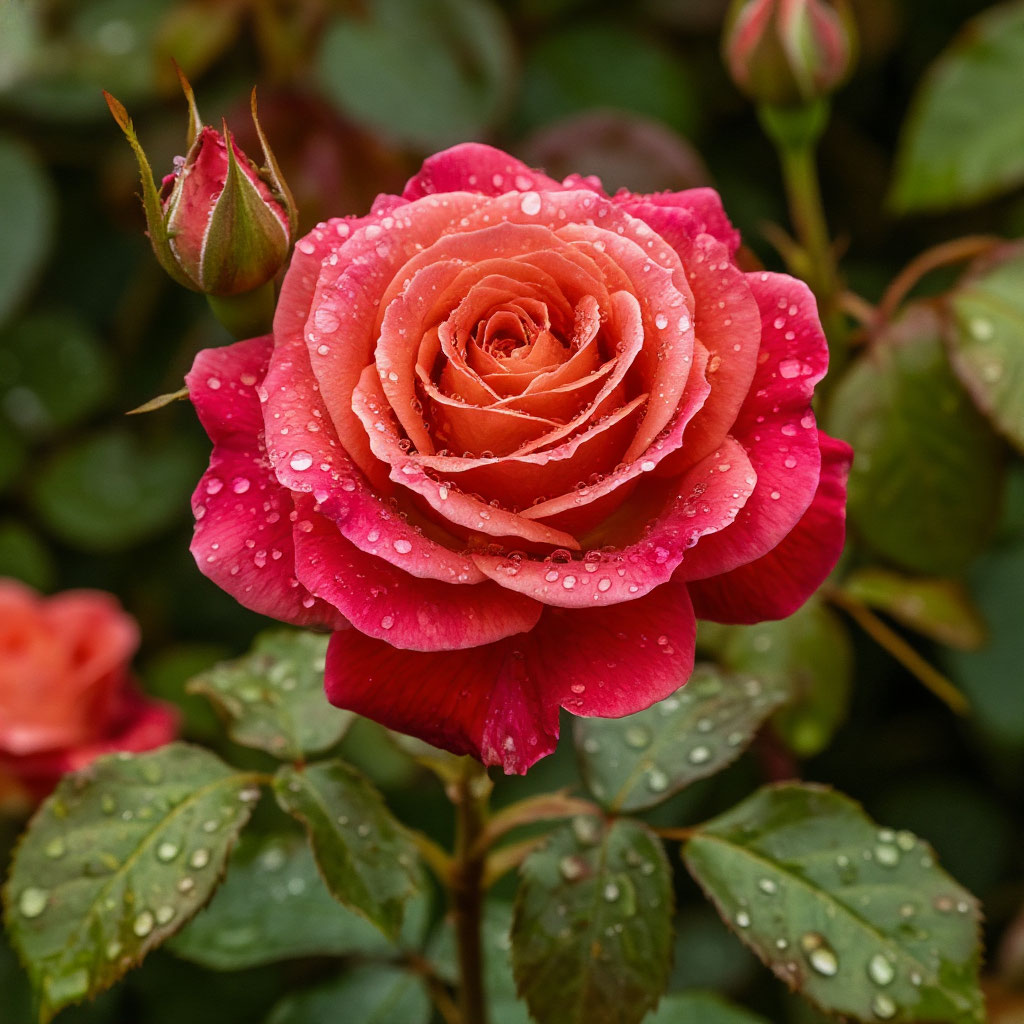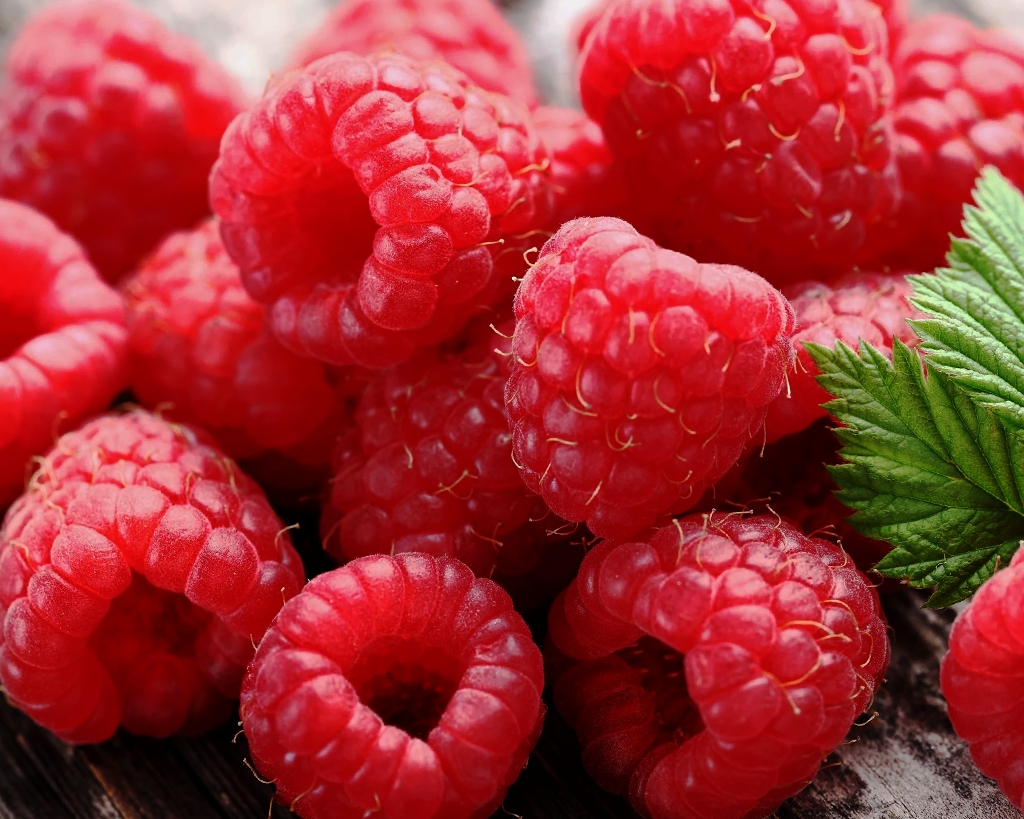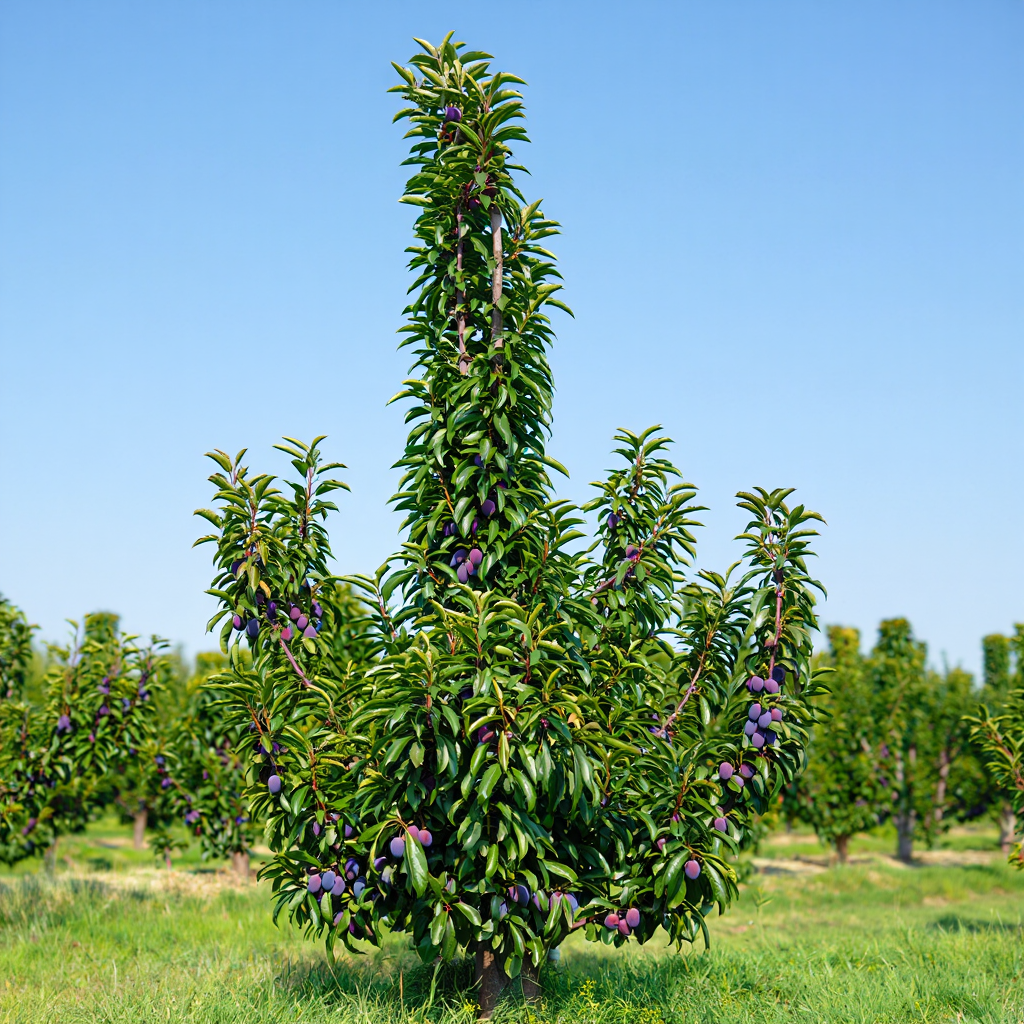Garden strawberry varieties are so diverse that choosing the right one can feel overwhelming. Should you go for giant berries or sweet small-fruited ones, early ripening or remontant, frost-resistant or delicate but incredibly tasty? If you have ever wondered what kind of strawberry to plant on your site, this guide will help you explore the best options. At the end of this article, you’ll find a link to a printable brochure.
Varieties of garden strawberries
Garden strawberry varieties are divided into several main types. Before deciding which ones to plant, it is important to understand all the types. The wide range of garden strawberry varieties may seem confusing at first, but once you systematize the information, making a choice will become much easier.
The first thing you should pay attention to is the maturation period. There are four main categories:
Early varieties -for those who want to enjoy fresh berries as early as possible. The first fruits appear in late May or early June. Just a great option for those who do not like to wait long. The only thing is that in such varieties, fruiting passes quickly – in a couple of weeks they give up almost the entire crop.
Medium-ripened varieties are the golden mean. The peak yield occurs in mid-summer-late June-early July. They are most often chosen by gardeners, as they give a consistently high yield and have time to gain enough sugar in good weather.
Late varieties are ideal for those who want to enjoy fresh strawberries longer. They ripen closer to August, but thanks to this they can avoid attacks by some pests that are active in the spring. Also, late strawberries are often more flavorful and juicy, as they take longer to gain flavor.
Remontant varieties are a real godsend for those who want to eat berries all summer. They are not limited to one wave of harvest, but bear fruit several times a season-starting in June and up to the autumn cold. However, such bushes require more care and regular fertilizing, as they need a lot of effort to please the berries all season.
But that’s not all! Strawberries differ not only in terms of maturation, but also in the size of berries.
Large-fruited varieties are the ones that produce huge, fleshy berries weighing up to 100 grams! They are convenient to collect, they look attractive, but sometimes they can be inferior in flavor to smaller varieties.
Small-fruited varieties – unlike their giant ‘relatives’, these berries are small, but incredibly fragrant and sweet. Their taste often resembles wild strawberries, and they are also perfect for home-made preparations-jams, jams and compotes.
Ampel varieties are a special type of strawberry that can be grown in hanging pots, on balconies and even in vertical beds. The bushes produce long whiskers with flowers and berries, creating a beautiful cascade.

Now that we have sorted out the classification, it will be easier to choose the right variety! Next, let’s talk about the most popular options and their features.
Popular varieties of garden dugout
When it comes to choosing a variety, you want something reliable, proven and, of course, delicious. Let’s find out which varieties have already earned the love of gardeners and what new products are worth trying.
Garden strawberry varieties are perfect for those who do not want to wait long
Kimberly is a real godsend for sweet lovers! Its berries have a pronounced caramel flavor and literally melt in your mouth. The bushes are compact, frost-resistant – an excellent choice for regions with unstable spring.
Clery is an ideal option for lovers of a balance of sweetness and light sourness. The berries are large, rich red, with a shiny skin. In addition, it is perfectly stored.
Alba is a variety for practical gardeners. Berries are large, dense, perfectly tolerate transportation. If you plan to sell your crops, this is a great option.
Medium-ripened garden strawberries varieties – a stable harvest in the middle of summer
Marshmallows are large, juicy berries with tender flesh. Great for fresh consumption and making desserts.
Honey is one of the most reliable varieties that does not require special care. The bushes are powerful, the yield is high, and the berries are rich red and sweet.
Marshall is a large-fruited variety that pleases with a large harvest. The berries are sweet and fragrant, but the bushes require good care.
Late garden strawberries varieties-we extend the pleasure until autumn
Malvina is one of the sweetest late varieties. The berries are large, fragrant, and the bushes are resistant to diseases.
Bogota – for those who like large and juicy berries. However, it does not tolerate the cold very well, so it may not be suitable for the northern regions.
Vima Tarda is a good choice for those who want a beautiful and delicious berry. It requires regular fertilizing, but rewards with a fragrant harvest.
Remontant garden strawberries varieties – for round-season harvest
Albion – sweet, large berries that ripen in waves all season. But the bushes require good care and regular fertilizing.
Elizabeth II is the leader in productivity among remontant varieties. It can bear fruit until the very frosts.
Mara de Bois -berries are small, but incredibly fragrant, with a real taste of wild strawberries.
Now that you know about the popular varieties, choosing your ideal option will become much easier!

How to choose a variety of garden strawberries for your plot?
When choosing the perfect garden strawberry varieties, you should take into account several key factors: climate, soil composition, level of care, and, of course, personal preferences for taste and maturity.
If your region is famous for harsh winters and spring frosts, it is better to give preference to hardy varieties. For example, Kimberly and Honey can withstand cold weather well, do not freeze out and produce a stable crop. But tender southern varieties, like Bogota, may not survive the harsh frosts without shelter.
Do you want to enjoy fresh berries all summer? Then you should combine the varieties correctly. Plant early (such as Clery), mid-ripened (such as Honey), and late (such as Malvina) varieties to harvest in waves from May to August. And if you want a really long fruiting season, plant remontant strawberries, such as Elizabeth II or Albion, which will delight with berries until the first frost.
It is equally important to take into account the characteristics of the soil. If your plot has light, fertile land with good aeration, then almost any variety will suit you, including Albion, which is demanding of the soil. But if the soil is clay and heavy, it is better to choose varieties that are more resistant to different conditions, such as Marshmallows, which adapt even to not the most ideal soils.
It is also important to think about how much time you are willing to devote to caring for berries. If you are looking for an unpretentious variety that does not require constant attention, choose Honey-it stably bears fruit even without special care. But large-fruited varieties, such as Marshall or Vima Tarda, require regular fertilizing and careful care, otherwise the berries may lose their great taste and size.
And of course, personal taste preferences also play a role! Do you like sugary, fragrant berries? You’ll love Kimberly and Mara de Bois. Do you prefer dense, transportable fruits? Then pay attention to Alba or Vima Tardu.
Choose varieties with all these factors in mind – and your berry garden will delight you with a harvest for more than one season!
Tips for growing garden strawberries varieties
To get a rich harvest, it is important to follow a few simple, but very significant rules. Strawberries are not the most capricious crop, but proper care will significantly increase its productivity.
Seat selection and boarding
Strawberry planting is a key point on which its further growth and yield largely depends. The most important thing is to choose the right location. This berry loves the sun, so a well-lit area protected from cold winds is best suited for planting. The more sun, the sweeter and more fragrant the berries will be!
You can plant strawberries in spring and autumn. In spring – from the end of April to the beginning of May, when the soil has already warmed up. In autumn – from the end of August to September, so that the bushes have time to take root before the cold weather.
Before planting, the soil must be prepared: remove weeds, dig up and apply organic fertilizers – humus or compost. If the ground is heavy, you can add sand to improve drainage.
Watering strawberries in the garden
Strawberries love moisture, but do not tolerate stagnation of water. It should be watered regularly, especially during the flowering period and the formation of berries. In dry periods without watering, the crop may noticeably decrease, and the berries will become smaller and less juicy.
It is best to use drip irrigation or water the bushes under the root in the morning or evening, so that the moisture does not evaporate too quickly. It is important to remember: if strawberries are blooming or forming ovaries, lack of water can cause the flowers to fall and reduce the yield.

Top dressing of wild strawberries – nutrition for a plentiful harvest
For strawberry bushes to delight you with large and sweet berries, they need nutrients. In the spring, before flowering, it is useful to feed the plants with nitrogen fertilizers – for example, mullein infusion or urea solution. This will help the bushes gain green mass.
During flowering and fruit formation, strawberries need phosphorus and potassium – they contribute to the filling of berries and improve their taste. Wood ash, superphosphate or special fertilizers for berry crops are well suited.
Updating the beds-we extend the yield
Over time, strawberry bushes are depleted, begin to produce fewer berries, and the fruits themselves become smaller. This usually happens after 3-4 years. In order for the yield to remain high, it is necessary to regularly update the plantings.
The best way is to alternate plots: every year, transplant some of the bushes to a new location, choosing areas where nightshade crops (tomatoes, potatoes) did not grow before, as they can transmit diseases to strawberries.
So which variety to choose for garden strawberries?
If you want sweets, try Kimberly or Malvina. We need a stable harvest-Elizabeth II or Honey. If you like an unusual fragrance, take Mara de Bois. Well, if you want to eat berries all summer-remontant varieties will help you!
What variety do you already have growing? Or are you planning to plant something new? Share in the comments! And now you can download the brochure.




